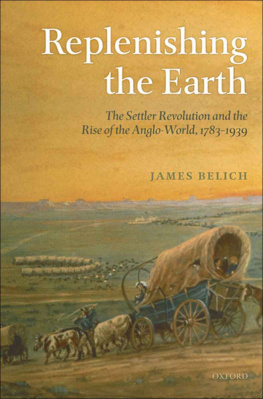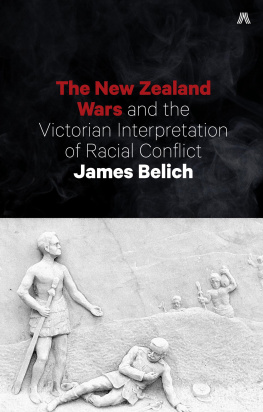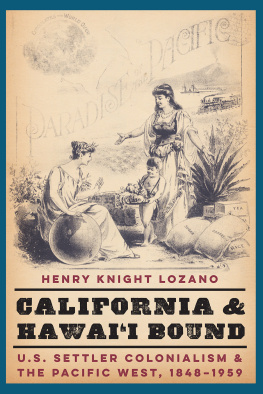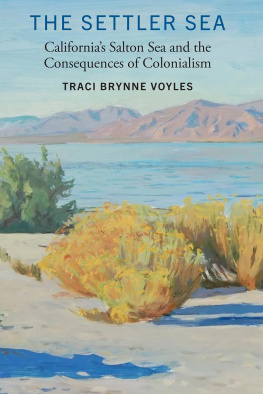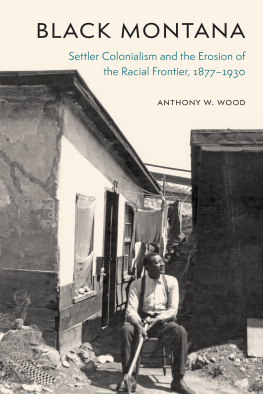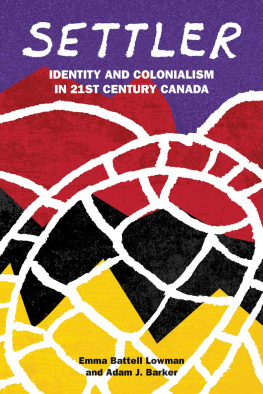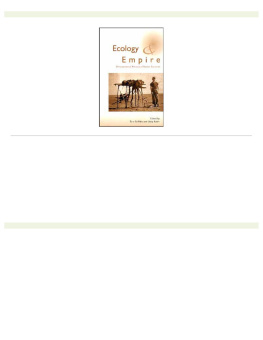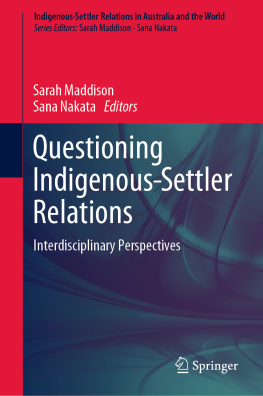REPLENISHING THE EARTH
REPLENISHING THE EARTH
THE SETTLER REVOLUTION AND THE RISE OF THE ANGLO-WORLD, 17831939
JAMES BELICH


Great Clarendon Street, Oxford 0X2 6DP
Oxford University Press is a department of the University of Oxford.
It furthers the Universitys objective of excellence in research, scholarship,
and education by publishing worldwide in
Oxford New York
Auckland Cape Town Dar es Salaam Hong Kong Karachi
Kuala Lumpur Madrid Melbourne Mexico City Nairobi
New Delhi Shanghai Taipei Toronto
With offices in
Argentina Austria Brazil Chile Czech Republic France Greece
Guatemala Hungary Italy Japan Poland Portugal Singapore
South Korea Switzerland Thailand Turkey Ukraine Vietnam
Oxford is a registered trade mark of Oxford University Press
in the UK and in certain other countries
Published in the United States
by Oxford University Press Inc., New York
James Belich 2009
The moral rights of the author have been asserted
Database right Oxford University Press (maker)
First published 2009
All rights reserved. No part of this publication may be reproduced,
stored in a retrieval system, or transmitted, in any form or by any means,
without the prior permission in writing of Oxford University Press,
or as expressly permitted by law, or under terms agreed with the appropriate
reprographics rights organization. Enquiries concerning reproduction
outside the scope of the above should be sent to the Rights Department,
Oxford University Press, at the address above
You must not circulate this book in any other binding or cover
and you must impose the same condition on any acquirer
British Library Cataloguing in Publication Data
Data available
Library of Congress Cataloging in Publication Data
Belich, James, 1956
Replenishing the earth: the settler revolution and the rise of the Anglo-world, 1783 1939/James
Belich.
p. cm.
Includes bibliographical references and index.
ISBN 9780199297276 (acid-free paper) 1. Great BritainEmigration and
immigrationHistory. 2. BritishForeign countriesHistory. 3. English-speaking
countriesEmigration and immigrationHistory. I. Title.
JV 1011.B58 2009
909/.0971241081dc22
2009013843
Typeset by Laserwords Private Limited, Chennai, India
Printed in Great Britain
on acid-free paper by
Clay Ltd, St Ives plc
For Angie and Colin
Acknowledgements
This study would not have been possible without the support of the Marsden Fund, the University of Auckland, and Victoria University of Wellington. This provided me with the relief from normal teaching duties necessary for a project of this scale. The willingness of these New Zealand institutions, with many demands on exiguous research resources, to back a wide-ranging trans-national study is gratefully acknowledged. I must also thank the Fulbright Foundation, Nuffield College, Oxford, and the University of Melbourne for assistance with research visits.
I am grateful for various kinds of help from a range of former colleagues and students at the University of Auckland, including Felicity Barnes, Barbara Batt, Malcolm Campbell, Laurel Flinn, Aroha Harris, John Hood, Miranda Johnson, Helen Mehaffy, John Morrow, Barry Reay, and Simon Thode. I am equally grateful for the help of Brigitte Bonisch-Brednich, Louise Grenside, Richard Hill, Paul Husbands, Neil Quigley, and Lydia Wevers, all of Victoria University of Wellington. As always, my friends and family have provided crucial support. I thank them all, and particularly acknowledge the contributions of Colin Feslier, David Scott, and Margaret, Maria, and Tessa Belich.
Let me also thank friends and colleagues from further a field: Philip Buckner, John Darwin, Jared Diamond, John Higley, Roger Louis, John McNeill, Melanie Nolan, John Pocock, Eric Richards, Stephen Howe and Daphna Verdi, and Grace and Tain Tompkins. My editors, Christopher Wheeler, Matthew Cotton, and Jeremy Langworthy, have shown patience and acuity beyond the call of duty.
James Belich
Stout Research Centre
Victoria University of Wellington
2008
Contents
List of Maps
Abbreviations
AHS | Wade Vamplew (ed.), Australians: Historical statistics, Broadway, New South Wales, 1987. |
CEHUS, i, ii, iii | Stanley L. Engerman and Robert E. Gallman (eds.), The Cambridge Economic History of the United States, Cambridge and New York, 3 vols., 19962000. |
IHS: A | B. R. Mitchell, International Historical Statistics: The Americas, 17501993, Basingstoke and New York, 1998. |
IHS: A, A and O | B. R. Mitchell, International Historical Statistics: Africa, Asia & Oceania, 17501993, Basingstoke and New York, 1998. |
IHS: E | B. R. Mitchell, International Historical Statistics: Europe, 17501993, Basingstoke and New York, 1998. |
OHBE, i | Nicholas Canny (ed.), The Oxford History of the British Empire, Vol. I, The Origins of Empire: British overseas enterprise to the close of the seventeenth century, Oxford, 1998. |
OHBE, ii | P. J. Marshall (ed.), The Oxford History of the British Empire, Vol. II, The eighteenth century, Oxford, 1998. |
OHBE, iii | Andrew Porter (ed.), The Oxford History of the British Empire, Vol. III, The nineteenth century, Oxford, 1998. |
OHBE, iv | Judith M. Brown and William Roger Louis, The Oxford History of the British Empire, Vol. IV: The twentieth century, Oxford, 1999. |
Introduction
Tales of Two Cities
Let us begin with two problems in urban history, exemplified by two pairs of cities: Chicago and Melbourne and London and New York. The name Chicago stems from the local Indian word for skunk weed or bad smell, later laundered in local legend into the wild garlic place.
In 1835, Tasmanian sheep-ranchers founded the settlement of Port Philip, in the area of south-eastern Australia later known as Victoria. After a perilous flirtation with the name Batmania (after founder John Batman), it came to be called Melbourne. From zero permanent inhabitants in 1835, Marvellous Melbourne grew to 473,000 in 1891. Gold, which poured in tons from Victorian fields from 1851, might be thought to explain this growth, and it did of course boost it. Yet the town was growing fast before gold was discoveredfrom zero to 23,000 people in the fifteen years to 1851. The precocious sprouting of these nineteenth-century settler cities is a resonant mystery, but we are not going to unravel it by reference to United States history alone.
Our second urban problem is even bigger: London and New York. Before 1800, few if any cities had ever reached a population of one million, though ancient Rome, medieval Baghdad, and eighteenth-century Beijing came close. After 1900, million-plus mega-cities became almost commonplace; there were twenty in 1920, fifty-one in 1940; eighty in 1961; and 226 in 1985. A century earlier, in 1890, there were only two: London and New York.
One key to the twentieth-century flowering of mega-cities was a massive modern agro-industrial revolution, which dwarfed earlier surges in farming productivity. Better machines and techniques, new fertilizers, improved crop varieties and carefully bred livestock, electricity, and the petrol engine massively boosted productivity. Artificial fertilizers came into their own in Europe and North America about 1900German use of them doubled between 18951901and spread to other continents thereafter. German grain production doubled between 18801913, while acreage remained static, and the number of pigs increased 250 per cent. Anti-fungal sprays eliminated potato blight in the early twentieth century. Maize yields per acre tripled or quadrupled through the use of hybrid seeds. Improved breeding techniques doubled milk-fat production per cow. Mechanization reduced the labour needed to produce a hectare of wheat from 150 hours to nine. Production rocketed, while consumptionanimal if not humanfell, and transport and storage improved. Mega-cities became possible in many parts of the world.
Next page
